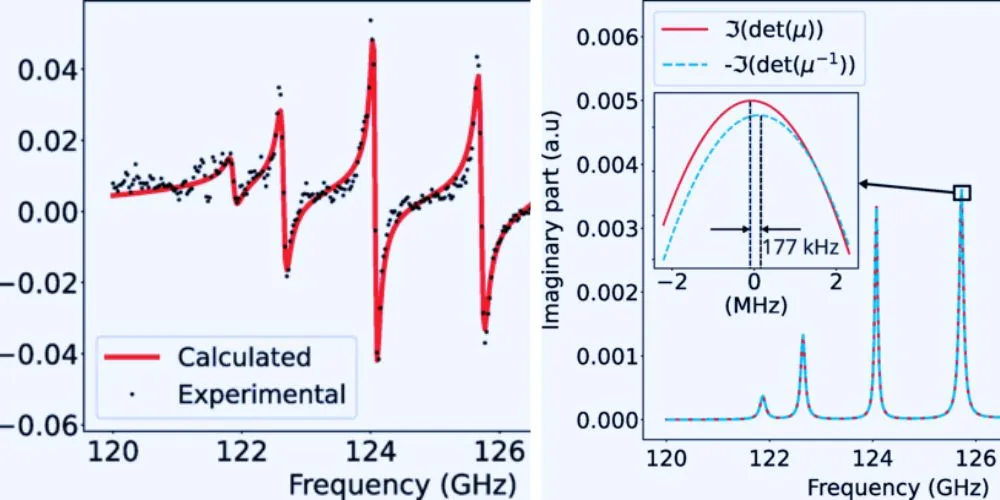Key Points
- Scientists at Lund University extended the Lyddane-Sachs-Teller relation to magnetism, introducing the Magnetic LST relation.
- The MLST relation connects a material’s static permeability to its magnetic resonance frequencies.
- Researchers validated their findings using a novel optical technique (THz-EPR-GSE) and SQUID magnetometry.
- To confirm the new relation, the study focused on an iron-doped gallium nitride (GaN) semiconductor.
Researchers at Lund University have made a significant breakthrough in material science by extending the Lyddane-Sachs-Teller (LST) relation to magnetism. Their discovery, published in Physical Review Letters, introduces the Magnetic Lyddane-Sachs-Teller (MLST) relation, which connects a material’s static permeability to its magnetic resonance frequencies. This advancement could revolutionize the study of magnetic materials and impact future electronic device development.
The LST relation, originally formulated in 1941 by Lyddane, Sachs, and Teller, describes how a material’s dielectric constant relates to its vibrational modes. This principle has long been essential in solid-state physics and materials science, aiding in the understanding and engineering various electronic components.
Researchers have found a similar relationship exists for magnetic materials, bridging the gap between static permeability (how a material responds to a magnetic field without oscillation) and magnetic resonance frequencies (the frequencies at which the material exhibits magnetic resonance).
The research team, led by Viktor Rindert, utilized a newly developed optical technique called THz-EPR-GSE (Terahertz Electron Paramagnetic Resonance Generalized Spectroscopic Ellipsometry). This advanced method allowed them to precisely measure the magnetic resonance frequencies of an iron-doped gallium nitride (GaN) semiconductor.
Their findings were further validated using SQUID magnetometry, a highly accurate technique for studying magnetic properties. The results confirmed the existence of the MLST relation, providing a deeper understanding of how magnetic excitations behave in different materials.
This discovery has far-reaching implications for fields like magneto-optics, antiferromagnetic materials, and semiconductor research. It could play a critical role in power electronics, where ultrawide band gap semiconductors are essential for improving efficiency and performance.










